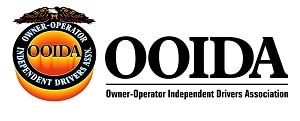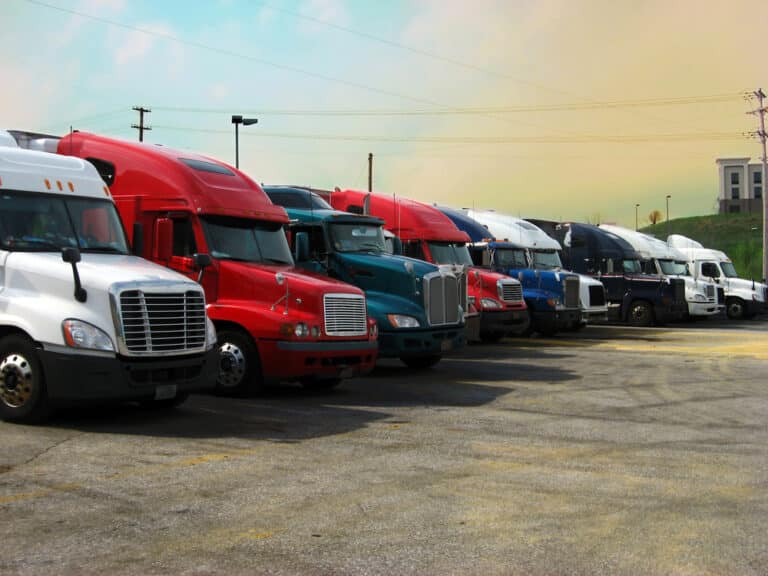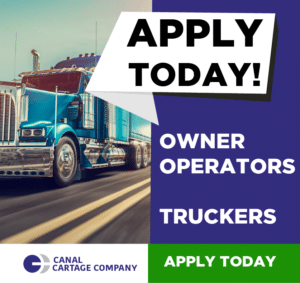Regardless of where you sit on the political spectrum, one thing that most people can agree on, is that the Trump administration paid attention to the trucking industry. Even declaring it an essential service and providing some support to truckers and carriers during the global pandemic. And OOIDA has been advocating for truckers.
Many owner-operators and other professionals in the trucking industry feel that they have not been heard for decades. While trucking remains the most vital goods and raw materials transportation option for the American economy, it is often overlooked by the White House. Or lumped in with other transportation sectors that do not represent the value that trucking provides to virtually every business in the country.
Now that President-Elect Biden is organizing his cabinet, the Owner-Operators Independent Drivers Association (OOIDA) wants to start on the right foot. And that means preserving some of the good progress that trucking associations have made with the Trump administration on key issues.
What the trucking industry does not want to see, is a backward slide into low relevance and attention to supporting the industry. There are many problems facing the American trucking industry. OOIDA has stepped up with a letter to President-Elect Biden to make sure that the progress is not lost in the (cabinet) shuffle.
Major Issues Facing the Trucking Industry in 2021
Did you know in 2019, there were just over 3.5 million CDL truckers on the road in the United States. It sounds like a large number, and more than adequate to handle the growing demands of the commercial, retail, and agricultural supply chains. But it is not. And the industry is having a hard time recruiting drivers and facing other obstacles that threaten to reduce the efficiency of drayage and transmodal freight services.
Here are five of the biggest issues facing the trucking industry right now.

1. OOIDA States Not Enough Experienced CDL Drivers in the United States
In late 2019, the American Transportation Research Institute (ATRI) released a report that helped identify the key issues that were impacting the efficiency and growth of the trucking industry. In the “Critical Issues in the Trucking Industry (2019)” report, the first concern addressed was the shortage of qualified CDL truckers.
The DRIVE SAFE ACT would allow Americans aged 18 to 21 years to acquire their CDL license. Of the major concerns in the trucking industry is that the driver shortage will lead to an incapacity to meet commercial demand. Consequently, the average age of an American truck driver still active within the industry is 55 years old, according to the Bureau of Labor Statistics.
What that means for the trucking industry is that the problem is about to get worse, not better, unless administrative changes occur. Within 10 years the majority of truckers will be aged 65 or older. Retirement will further reduce the number of qualified drivers on the road.
Previously, the only 18-20-year old’s that could legally operate a heavy commercial truck, were current or former members of the military. Those that had received training and licensure while serving in the Armed Forces. Drivers in training under the age of 21 have been able to drive within a state but were not permitted to operate a commercial vehicle on an interstate trip. However, a new pilot program is in place to allow drivers under the age of 21 years to complete interstate commercial drayage trips.
The Federal Motor Carrier Association (FMCA) accepted comments on the proposed driver-age restrictions. Based on industry feedback from carriers, CDL truckers and safety associations, the proposed guidelines were published. The law will likely move forward in 2021.
2. Increasing Liability Insurance Rates Thanks to Nuclear Verdicts
To be clear, independent owner-operators already pay a stifling amount of commercial insurance for their truck and business. Consider that the average American pays about $119 per month on vehicle insurance. Now compare that to the average independent owner-operator truck driver, who pays $771 to $919 (2020 average) for commercial vehicle insurance. Per month.
Commercial truck insurance is a necessity, and it is tax deductible for an independent driver. But when you consider that the average rate of $771-$991 per month for insurance that provides roughly $750,000 dollars in liability coverage. The recommendations most worrying, are to raise liability coverage to a minimum of $5 million. Increasing costs substantially for truckers
Truckers that provide drayage services to carriers under a lease contract may still need to carry non-truck or bobtail gap insurance and coverage. It is still expensive. And generally, only fleet drivers can access coverage under a carrier’s primary liability insurance.
According to an article by Transport Dive, Jennifer Nuest (transportation marketing coordinator for HUB international Transportation Insurance Services) things a hike to increase insurance rates would be a detriment to owner-operators. Fleets or company drivers often benefit from group liability insurance, which provides good coverage at a fraction of the cost. But as owner-operators are independent business owners, they cannot access group liability rates.
While many accident settlements are resolved for an average of $10,000 to $25,000, the increase of nuclear liability verdicts ($10 million) caused truckers to worry whether insurance premiums may double.
3. OOIDA Praises Hours of Service (HOS) Accommodations for Sleeper Berth
The Notice of Proposed Rulemaking (NPRM) on the Hours of Service (HOS) rules was a welcome relief for the trucking industry. It provided additional flexibility on the use of the sleeper berth (cab) for truckers to log their 30-minute rest break.
What this means is that a trucker could safely pull over as required, to log a rest break on the ELD (electronic logging device) without leaving the truck. This helped truckers overcome the growing problems of safe parking for rest breaks at truck stops and interstate rest areas.

What did the NPRM Temporarily Change in the HOS Regulations for Truckers?
The final rule was issued in May 2020. The FMCA received more than 8,000 comments from the trucking industry and created the final rules of service which include:
- A 30-minute break rule by requiring a break after eight hours of consecutive driving. The trucker may now use on on-duty but not driving status on the ELD, instead of the off-duty status originally required.
- The sleeper-berth exception now allows drivers to split their required 10 hours of off-duty or none driving time, into two rest periods. Drivers can choose between an 8/12 split or a 7/3 split, neither would count against the 14-hour legal operational time.
- Adverse driving conditions mean that a trucker can extend the maximum hours of operation in a day depending on inclement conditions. This includes ice, emergency road closures, hurricanes and flooding or other natural disasters. This adds two hours of additional time to the 11-hour maximum operational hours in a day, to a maximum of 13 under specific conditions.
- The short-haul exemption extends the maximum time on-duty from 12 to 14 hours. A short-haul driver may now complete up to 150 miles during the day. The time exception was in part, to accommodate drivers who serve local commercial deliveries and encounter peak traffic times that slow down delivery or pick-ups.
The purpose of the HOS temporary changes was to provide more flexibility and to ensure that all logistics providers were not hindered or delayed by limitations and ELD requirements. To make sure that retail, food, healthcare, and commercial goods continued to flow in the United States.
Will the New HOS Regulations Stick?
The NPRM (Notice of Proposed Rulemaking) is not permanent. It means that right now, these accommodations are not yet law, and they could be rolled back to the former HOS regulations. The accommodations were provided for truckers to help them cope with delays and improve efficiency of commercial deliveries during the Covid-19 pandemic.
Truckers are hopeful that the NPRM will be ratified and become law, giving them reasonable flexibility as required for their HOS requirements. Until then, they should be considered a temporary measure while American businesses navigate the current health emergency.
4. America’s Crumbling Highways and Investment in Infrastructure
There are several key issues involving infrastructure. The industry concern index regarding infrastructure issues was over 50% of drivers polled in the ATRI research. In short, truckers want two main improvements:
- Increased funding for repair and building of new highways in the United States. Part of the federal motor fuels tax revenue (which truckers pay more of than civilian drivers) is to fund ongoing improvements to interstate highways and corridors that are essential for commercial freight management. The majority of truckers polled in the ATI Research indicated that they would be willing to pay higher fuel taxes if it meant resolving infrastructure problems and issues.
- To create a new funding program and initiative to build new roads to ease bottlenecks or high traffic zones around major commercial freight areas. This includes around transmodal (rail) zones and Ports for drayage pick-up and drop-off.
Infrastructure does not only refer to the fact that in many places, highways and bridges are in disrepair. While the average civilian driver does not think about the occasional pothole on a highway, poor road conditions can lead to increased maintenance costs and damage for truckers, per OOIDA.
5. Parking and Adequate Space at Rest Stops for Truckers an Issue Per OOIDA
A CDL trucker on the road cannot pull a Class 8 through a drive-thru to get a burger. Truckers have to park (safely and sometimes away from the busy fast-food restaurant lot) and go into the restaurant to buy their meal.
When the pandemic began, restaurants moved to close their indoor dining services. A good way to help prevent crowds from gathering and reduce infection rates. Truckers then faced a new problem; the restaurants were closed, and they could not use the drive thru. Nor could they use the facilities like the bathroom on their meal beak.
No one could walk through a drive-thru, but in the early days of the pandemic, some truckers showed that they attempted to. The inability to access convenience meals meant that truckers had to adapt again, to shopping for groceries and keeping snacks or easy to prepare meals in the berth.
The ELDs (electronic logging devices) also require that truckers stop for mandatory rest breaks. If your ELD does not log a rest stop within the parameters of the HOS rules, a trucker and/or carrier can get a citation or a fine. Repeated offenses can lead to the suspension of the CDL.
When restaurants closed, more truckers sought out rest stops. There, they could boil some water or take out a hot plate and cook themselves something in the truck. Except, at a rest stop, you need to have a place to park first. That became a problem.
OOIDA Writes to President-Elect Biden to Pave the Way to Continued Progress for Truckers
The Owner-Operators Independent Drivers Association (OOIDA) wrote a letter to introduce themselves to President-Elect Biden. And also, to begin summarizing the list of critical challenges that the trucking industry is facing.
Some suggestions to raise the funds needed for more infrastructural improvements have included toll highways. But OOIDA and the majority of the trucking industry are very opposed to the idea. First of all, trucks already pay a higher axle charge for using any kind of toll route. More than what civilian drivers pay.
Tolls can cost as much as 45 cents per mile (and higher in some jurisdictions). The average American truckdriver makes about 65 cents per mile. An increase to tolls would devastate profitability for truckers. Truckers feel that they disproportionately fund infrastructure with increased fuel and toll taxes. And that any increases should occur for non-commercial truck drivers.
OOIDA told the Biden Administration that trucking associations would be against any increase to tolls. And would also fight to prevent increased liability insurance premiums. The profitability margins for owner-operators are already under threat. No increase to costs will be accepted by national trucking associations.
In a second letter sent to President-Elect Joe Biden, OOIDA President Todd Spencer expressed his interest in being the next administrator or leader of the FMSCA. Spencer has more than 45 years of experience in the trucking industry and understands the challenges that truckers face.



